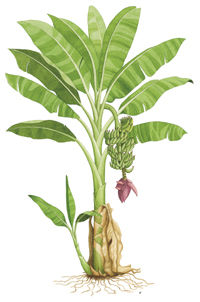

Growth stages |
PestsFor weeds and diseases please see further down on this page. For rodents, snails and slugs please click here |
Seed |
|
| Corms, suckers | Banana weevil |
Seedling Stage |
|
| Leaves | Aphids |
Vegetative Stage |
|
| Pseudostem | Banana weevil |
| Leaves | Aphids Mealybug Scales Spider mites |
Reproductive Stage |
|
| Flowers | Scales |
| Bunch, hand, finger | Mealybug Thrips |
Maturation stage |
|
| Bunch, hand, finger | Mealybug Thrips |